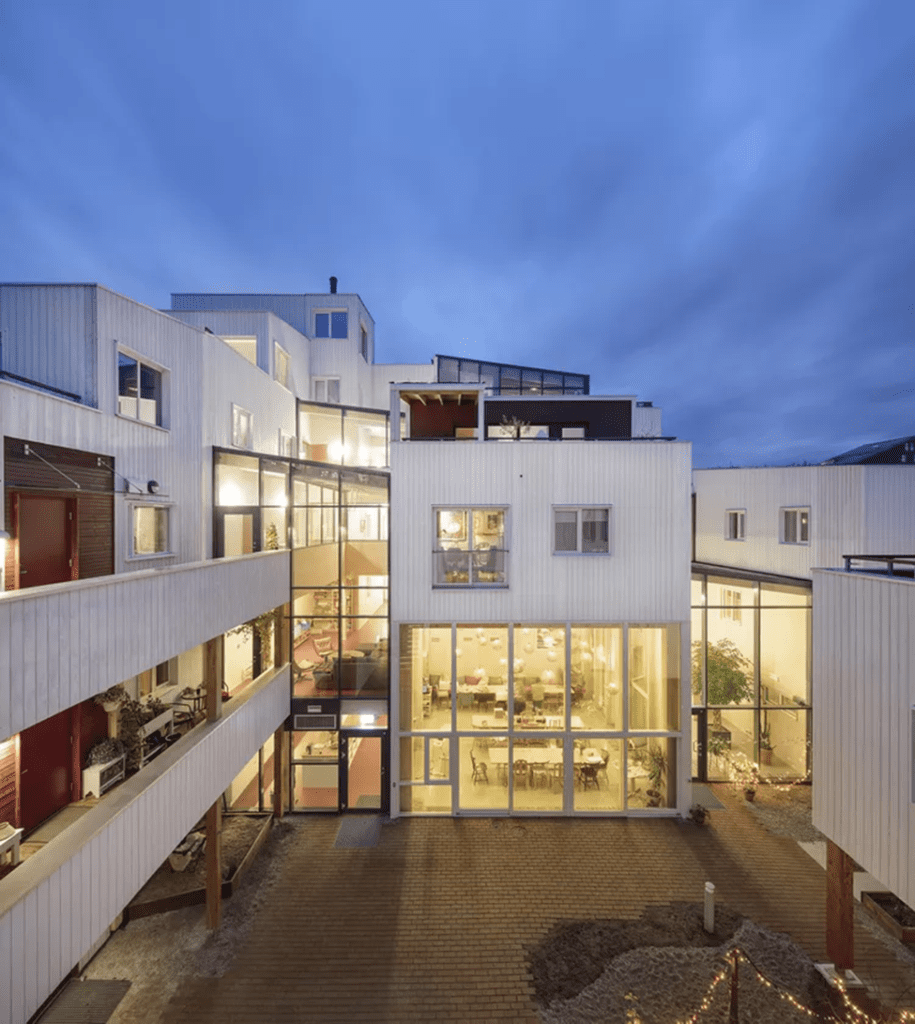Vindmøllebakken Sustainable Urban Design project-Norway is the twenty-fifth article on projects from practice. Vindmøllebakken is in Stavanger city a city in southwestern Norway that is deep in history to the 12th century. This urban regeneration and development project is another sustainable urban development of mixed-use type. This urban development and urban design include various new themes and concepts. The theme and concept of the direct ownership by the architecture firm and the contractor which are the holders of the previous industrial land. The architecture firm owns one-third and the remaining was for the contractor. The other new theme and urban design concept is the design of development around common and shared facilities for the homes and buildings. See Figure 1, the urban development project site view in an industrial area zone.

Gaining by Sharing the new theme and urban design concept is relevant both to developers and to sustainable living. The new theme came to foster sustainable urban development principles of architecture and infrastructure. The theme focuses and to ensure the increase of quality of living and social relationships between users. This type of co-living is seen in other countries, such as Denmark or Austria, but is relatively new in Norway.
The theme of gaining by sharing attracted many age ranges from people living in the area and the first resident moved in 2019. The users were involved in the building of this urban design project from day one as they contributed to creating solutions they needed and used together. This fosters trust, and ownership and strengthens community ties. See Figure 2, external street view of the urban development.

The urban design and architecture of this urban development are centered around the idea of having a common zone, an internal courtyard, where all the residential units are gathered around. The project includes various types of residential units to fit the society’s needs and the different age ranges of that community. The internal zone between the units includes shared facilities like an amphitheater, library, kitchen, and dining area adding to a common garden area and workshop. Residents can cook together or alone and sit and eat together, they can use the garden as a group or alone, the library is for all to sit and read, and the workshop is for innovative activities. See Figures 3, 4, and 5, the courtyard, dining area, and amphitheater interior photos.



To suit families and people’s needs and budgets the urban design includes various types sizes and layouts of homes and flats. The target of the developers is to provide residential units for small families with kids that they can afford to buy. The development currently includes different types of people and cultures that were looking forward to enjoying a greater sense of social belonging and a safe living environment. This urban development attracted many developer’s attention and public agencies, and the architecture firm is involved now in several similar developments in Alta, Mandal, and Arendal.
As illustrated on the first-floor plan (See Figure 6) all the units are designed around the central courtyard. The central courtyard leads to the entrance and the common area of the amphitheater, a common sitting area in the entrance, and space linked to the dining and kitchen. The development is composed of 13 units. The units are similar in area and designed to fit the site condition and layout. The units regardless of if they were a home or an apartment building are designed so that some of them are accessed from a common vertical circulation, staircase, leading to the top parts. Some other units have access from the outside directly to the main street. Some units have their staircase inside and have two-story access from inside.

The fourth-floor plan shows clearly that the apartment buildings have access from a common vertical circulation staircase. It illustrates that the firm responds to one of the sustainable urban development principles of diversity. The floor plan shows the roof of the other units as there are different building densities and heights in the development. See Figure 7, the fourth-floor plan of the urban design development.

The apartment’s architectural design is modern architectural design. It includes some of the modern architectural style principles. The urban design responded to the sustainable urban development principles like having a roof garden that insulates the roofs and decreases water run-off, the walls insulation, hemp insulation, which is a sustainable material of locally made, increase in the amount of glass areas increased light in the open areas and reduced electrical consumption, building on former industrial site to reduce the burden on virgin land, and economic friendly homes and flats that fit the community.
[…] flat and the building as a whole. The idea is also common in some European countries like Norway ( see my article on that project […]
[…] flat and the building as a whole. The idea is also common in some European countries like Norway ( see my article on that project […]
[…] Vindmøllebakken Sustainable Urban Design project-Norway […]